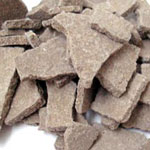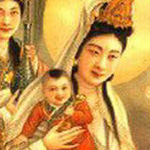The Lord of Bonfim
WordPress database error: [Incorrect DATE value: '']
SELECT * FROM wp_gigpress_artists AS a, wp_gigpress_venues as v, wp_gigpress_shows AS s LEFT JOIN wp_gigpress_tours AS t ON s.show_tour_id = t.tour_id WHERE show_related = 7 AND show_expire != '' AND show_status != 'deleted' AND s.show_artist_id = a.artist_id AND s.show_venue_id = v.venue_id ORDER BY show_date asc,show_expire asc,show_time asc
“Our Lord of the Good End”
Also known as Senhor do Bonfim (Portuguese)
The Lord of Bonfim is a miraculous statue housed in the Church of Nosso Senhor do Bonfim in Bahia, Brazil. The statue depicts crucified Jesus at the moment of his death. The Lord of Bonfim is considered a Black Christ, a counterpart to the Black Madonna. His name literally means “the Lord of the Good End”.
The origins of his veneration lie in Portugal, where a woman discovered a mysterious statue on the shore at Setubal, amidst pieces of wood and wreckage from a shipwreck. The statue soon demonstrated miraculous properties. To this day, herbs from Setubal’s gardens reputedly possess special healing powers, because of their proximity to the Lord of Bonfim.
In 1745, in fulfillment of a vow, a Portuguese naval officer brought an exact replica of this statue to Brazil. Miracles immediately proliferated. Veneration of Bonfim in Portugal is localized, but in Brazil, he may be the most widely venerated miracle producer. The Lord of Bonfim reputedly heals tuberculosis, leprosy, terminal cancer, mental illness, and dementia. He protects people at sea as well as those who are shipwrecked. In other words, if you didn’t invoke him before the ship sank, it’s not too late to ask for help.
The Lord of Bonfim is intensely identified with the African deity, Oxala, also known as Obatala. A huge component of his veneration in Brazil derives, not from conventional Roman Catholic sources, but from Candomblé, other African Diaspora traditions, or from syncretic blends of spiritual traditions. For many devotees, the two deities have merged and cannot be separated but, for others, the Lord of Bonfim is Obatala, as portrayed by a statue of Christ.
In Salvador, Bahia, Bonfim is celebrated annually with the Lavagem, the ritual washing of Bonfim: practitioners of Candomblé parade with jars of water with which they wash the steps of the Bonfim Catholic Basilica. The tradition derives from a Yoruba ritual called the Waters of Oxala. Capoeira, the Afro-Brazilian martial-spiritual art, is also incorporated into festivities held in Bonfim’s honor.
The amulet most associated with Bonfim is a ribbon called a fita. Fitas first appeared in the 19th century and were silk ribbons cut to the length of the statue’s right arm, then embroidered with his name. They were originally worn around the neck or hung on the wall as an amulet. Religious medals and milagros were hung from them as testimonials. The modern fita is rarely silk and is typically tied around the left wrist. It may or may not have spiritual significance to the wearer. Although modern fitas are incorporated into the process of petitioning the Lord of Bonfim, they are also popular and inexpensive souvenirs purchased and worn by tourists, intended only to be emblematic of Brazil. Modern fitas are available in many colors, which may be coordinated to match one’s desire. The words ‘Lord of Bonfim’ are usually stamped on the ribbon. There is a ritual involved in wearing one:
- Wrap the fita around your left wrist.
- Make three knots to tie it securely, making a wish with each knot. You can make three wishes or repeat the same wish for intensification.
According to tradition, your wish or wishes will only be granted if the ribbon is allowed to deteriorate naturally and fall off the wrist without any help. As technically this is a petition, not just a random wish, should your desires be fulfilled, some sort of gesture of appreciation towards the Lord is in order.
- Color: White
- Sacred Site: The Church of Nosso Senhor do Bonfim in San Salvador, Bahia
- Sacred Feast: Bahia’s Festival of Bonfim begins annually on the second Thursday following the Feast of the Epiphany of January 6th and lasts ten days.
- Offerings: White candles; white flowers; milagros; the Church of Bonfim exhibits casts of body parts healed by the Lord (arms, legs, heads, kidneys, and so forth.) If he performs a major service to you, the traditional offering is a pilgrimage to his shrine.
• Further information on Obatala and Oxala may be found in the Encyclopedia of Spirits.
• Further information on Black Madonnas may be found in the Encyclopedia of Spirits and the Encyclopedia of Mystics, Saints, and Sages
• Further information on petitioning saints can be found in the Encyclopedia of Mystics, Saints, and Sages

